In a couple of earlier lessons I explained exactly what scale degrees are. For this lesson I’m going to go into some detail about how learning scale degrees can benefit you.
If you haven’t gone over the previous two lessons, you might want to check them out before tackling this lesson. You can do that now by clicking on the links below…
OK, now that you’ve reviewed the earlier lessons, let’s get started with this one!
Overview Of The Benefits
There are probably dozens of benefits to learning how to visualize scale degrees. Here
are some off the top of my head …
- You’ll improve your understanding of chords, scales, arpeggios and other musical materials.
- You’ll improve your ability to memorise chords, scales, arpeggios and other musical materials.
- You’ll improve your ability to construct chords, scales, arpeggios and other musical materials.
- You’ll be able to learn, understand and memorise music theory much more effectively.
- You’ll be able to see how chords, scales, arpeggios and other musical materials all relate to each other.
- Your ability to compose will improve.
- Your ability to improvise will improve.
- You’ll gain a much better mastery of the guitar fretboard.
Because I don’t want this lesson to be insanely long, let’s have a quick look at a
four of the benefits…
Benefit One: Chord Understanding
Take a look at the A major seventh chord below…
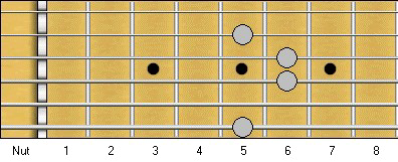
This is how a lot of guitarists see chords—as a group of dots to be memorised. They would have absolutely no understanding of why the above chord is called A major seventh.
Now, let’s say that someone has been diligent in memorising the notes of the fretboard. They might see the A major seventh chord like this…
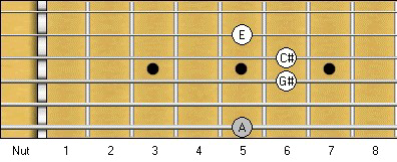
This is much better because it tells them what notes are in the chord. This would help them to understand the chord a little better.
But what’s missing?
Knowing the notes of a chord doesn’t tell you the function of each of the notes—only scale degrees do this. Have a look at the diagram below…
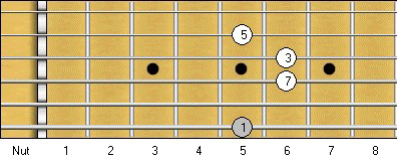
The scale degrees give us a lot of understanding about how the chord is constructed. Even someone with a fairly basic understanding of chord construction theory would totally understand why the above chord is an A major seventh chord.
Benefit Two: Chord Memorisation
Learning about scale degrees helps you to understand more about chords. This greater understanding will dramatically improve your ability to memorise chords. This is because we usually memorise things that we understand much faster than things that we don’t understand! For example, would it be easier for you to memorise a page from a book in English, or a page from a book in a foreign language you had no understanding of? The answer’s obvious isn’t it? 🙂
Let’s take a look at an example by revisiting our trusty A major seventh chord…

As I mentioned before, this is how a lot of guitarists would see this chord, as a group of dots to be memorised. They would have no understanding of the function (i.e. scale degree) of each note. Seeing the chord in this way makes it heaps harder to memorise—you have to rely solely on rote memorisation.
Let’s take a look at how someone will see the same chord if they understand scale degrees…

It gives us a lot more information doesn’t it? We’re no longer trying to memorise random dots—we are memorising something that has meaning. Which brings us to a very powerful chord memorisation concept…
The more you learn about chords, the easier it will be to see the similarities and differences between them. You’ll notice that some chord types contain almost identical scale degrees. There might only be one scale degree that is different. Let’s have a look at an example…
Here’s our A major seventh chord again…

And now let’s look at an A dominant seventh chord…
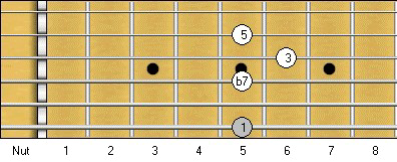
Notice how there is only one difference—the A major seventh has a “7” while the A dominant seventh has a “b7”. This means that once you have memorised the A major seventh chord, then the A dominant seventh chord is going to be a piece of cake to memorise!
Pretty cool huh?
Let’s take this concept further by taking a look at the following A minor seventh chord…
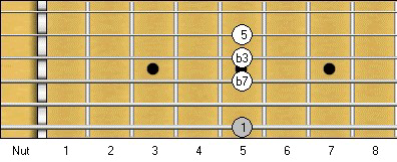
And here’s an A minor seventh flat five chord…
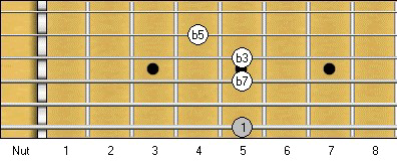
And finally, here’s an A diminished seventh chord…
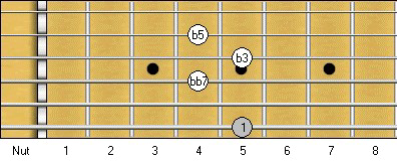
Have a look at all the chord diagrams again. What do you notice? Can you see how memorising all five chords will be easy if you learn them in this order?
Benefit Three: Scale Understanding
Now that we’ve talked about chords, let’s now tackle scales. To get started, please take a look at the A major scale below…
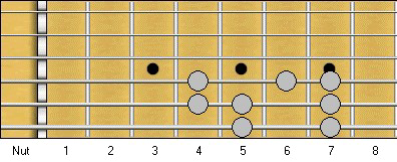
Guitarists often memorise scale patterns like this with no understanding of how the pattern is constructed. This can often make learning a lot of new scales very challenging.
People that know the notes on the guitar fretboard will probably see the same scale in this way…
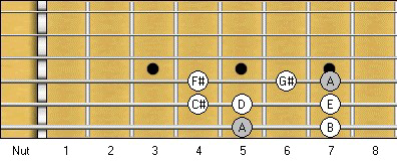
Seeing the scale like this is a lot better, because we at least know what notes the scale uses. Now let’s check out how you would see the scale pattern if you understood scale degrees…
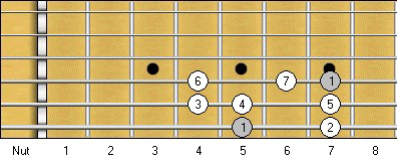
Seeing the scale using scale degrees is great because it tells us the function of each note in the scale. This increase in understanding will lead us to the next benefit of learning about scale degrees…
Benefit Four: Scale Memorisation
You already know from above how increasing your understanding of chords will increase your ability to memorise them. Doesn’t it make sense that this would also be true for scales?
Check out the A major scale pattern below…

Let’s now look at the same scale pattern using scale degrees…

This gives us a lot more information!
Remember how earlier I talked about how you can learn new chords by relating them to previously memorised chords? We’ll, the same principle works for scales. Yay! Let’s look at an example now…
Check out the A Major scale shown below…

Let’s now look at a different scale, the A Lydian mode…
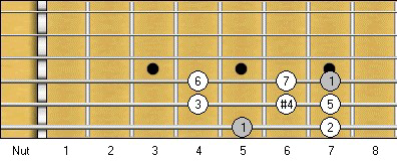
What do you notice when you compare this new scale to the major scale above it? They’re very similar aren’t they?
If you looked carefully, you would have noticed that the A Lydian mode has almost exactly the same scale degrees as the major scale. The only difference is that it has a “#4” instead of a “4”.
Now check out the A Lydian Dominant scale shown below…
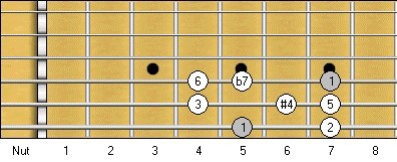
It’s very similar to the A Lydian mode isn’t it? The only difference is that it has a “b7” while the A Lydian mode has a “7”.
So what does this all mean?
If you memorise the scale degrees of the A major scale well, this will make learning the A Lydian mode easier. Learning the scale degrees of the A Lydian mode will then make learning the A Lydian Dominant scale easier!
A Few Last Words
If you have the desire to have excellent fretboard knowledge, then learning the scale degrees of the chords and scales you learn is essential. Sure, it can take some extra time in the beginning stages. But as your overall ability to visualise scale degrees develops, you’ll soon be memorising chords and scales at an accelerated rate!
Are You An Auckland Guitarist That Wants To Significantly Improve Your Electric Guitar Playing?
 If you're an Auckland guitarist wanting to improve your guitar playing, then my Auckland electric guitar lessons might be for you. I can help you to the develop technique, musicianship and mindset that will move you closer to how you truly want to play.
If you're an Auckland guitarist wanting to improve your guitar playing, then my Auckland electric guitar lessons might be for you. I can help you to the develop technique, musicianship and mindset that will move you closer to how you truly want to play.
To find out more about exactly how I can help you improve your playing, then download my latest Auckland guitar lessons info pack below...
